
No mo’ FOMO: 3 science-backed abandoned cart tactics that work
Feel like your abandoned cart emails aren't quite doing the trick? Here are 3 proven copy tricks you can use to turn on-the-fencers into customers.
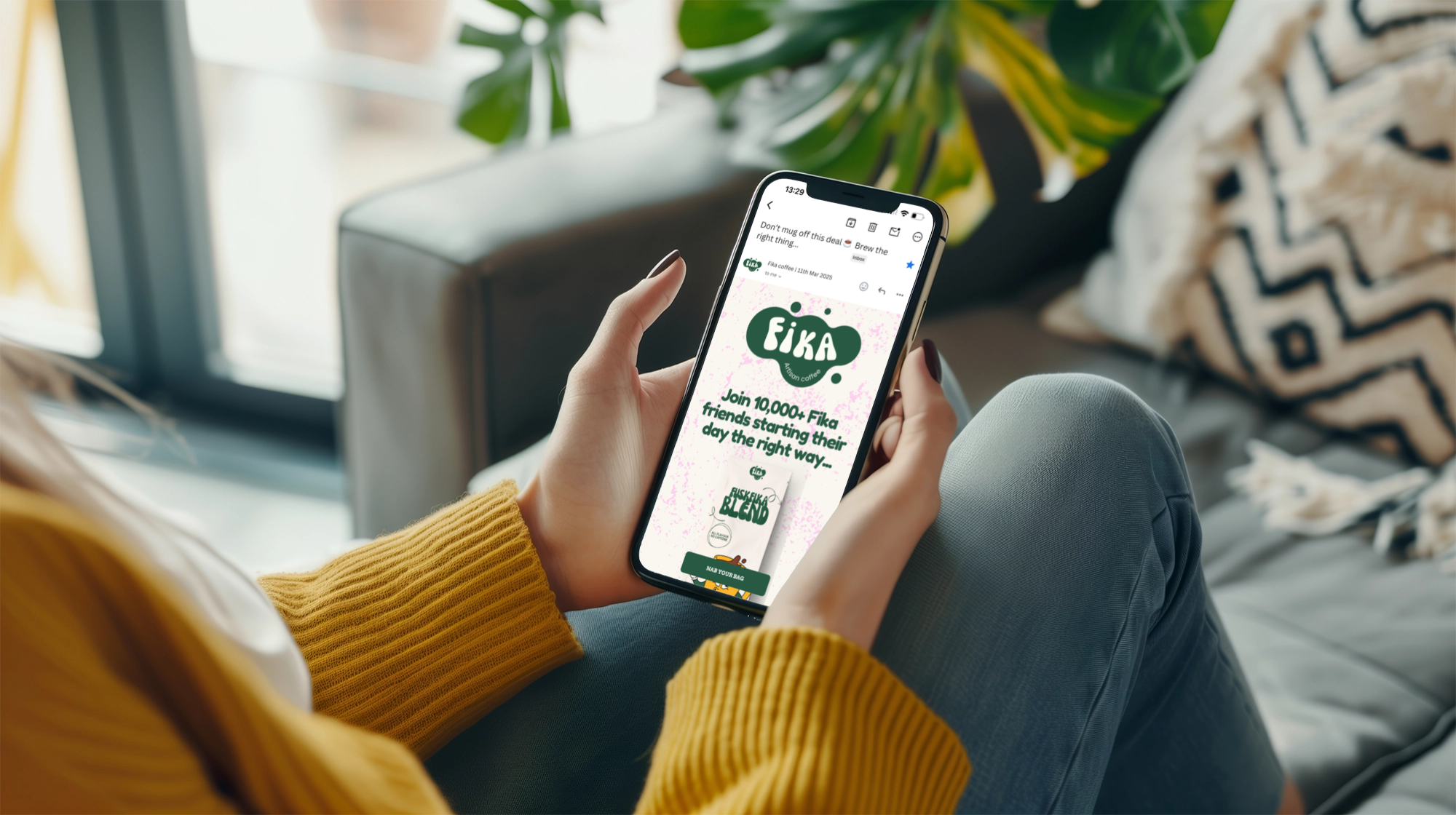
We all know that abandoned cart sequences are a mega-important part of your sales funnel.
Not only do they have the highest revenue per recipient (RPR) of any automated email sequence according to Klaviyo, but they’re a second bite at the cherry. A chance to turn a “hmm, maybe” lead into a “where’s my wallet?!” customer.
The brief seems pretty straightforward: write a few emails that remind the customer why they wanted to buy and get them to check out.
But as soon as your fingers hover over the keyboard, you realise that abandoned cart emails are tough to write, man.

On top of the practical questions (like when to send them, how often to send them, etc…) you’re dealing with a load of assumptions and questions that you just don’t have the answers to.
👉️ Why didn’t they check out?
👉️ What objections do I need to overcome?
👉️ How can I nudge them towards buying without coming across all slimy?
👉️ How much selling is too much selling?
With all those thoughts racing around, it’s easy to land on one of two abandoned cart techniques you see almost every other brand doing: good ol’ scarcity tactics (“Hurry! Only 2 left in stock!”) or throwing in a discount (“Still want it? Here’s 10% off.”)
The problem is, those tactics could be hurting your brand.
By throwing in discounts right away, you’re not cutting into your margin, you’re subconsciously training your customers to devalue your products.
Studies into the price-quality heuristic show that products that are often discounted are thought of as lower quality and lead to your customers thinking that you inflate your prices.
On top of that, if you’re using scarcity too much — especially if it’s not entirely true scarcity — you could be actively putting off Gen Z and Millennial shoppers. Younger (and slightly less young) customers have grown up online and are hyper-aware of sales tricks, and they absolutely hate feeling manipulated.
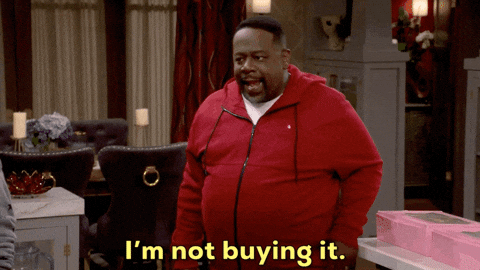
(And yes, we’re very proud of ourselves for this double entendre.)
Note: we’re not saying that using scarcity and discounts don’t have a place in your abandoned cart sequence — they 100% should — but they should be part of your bigger strategy not the whole strategy.
Using discounts and FOMO in moderation feels genuine and lines up with what a customer expects from brands like yours.
But using them as the only tricks up your sleeve can devalue your brand and damage customer loyalty. That’s why it’s good to balance out your use of discounts and FOMO with some brand-building tricks.
With that in mind, here are three of our go-to consumer psychology tricks you can use in your abandoned cart emails to turn on-the-fencers into fully bought-in brand loyalists.
1. Use the endowment effect AKA make customers feel like they already own your products
The endowment effect is a cognitive bias where people value things more once they feel ownership over them.
Even imagined ownership increases the perceived value of your products in your customers’ minds.
And that perceived ownership makes them significantly more likely to buy.
Think of it like this: you’re scrolling through house listings in your local area and spot a place that’s perfect. You can see exactly how you want to decorate it, you can imagine the dog and kids playing in the garden (or your mates coming round for BBQ and some day-drinking…)
When you put in an offer, somebody else offers above market price. What’s your gut telling you to do? Walk away or bid higher because you already feel like the house is yours?
It’s the same thing with eBay or your ASOS basket (“we’ll hold these for you for one hour…”) too. When someone adds a product to their cart, they’ve already mentally “claimed” it as theirs.
👉️ Research by Kahneman, Knetsch, & Thaler (1991) found that people demand more money to give up an item than they’d pay to acquire it, proving how ownership increases perceived value.
👉️ A study from the Journal of Consumer Research found that when people personalise a product (like customising sneakers or designing a car online), they’re more likely to buy it because they feel a sense of ownership.
How to use copy to make customers feel like they already own your products
Your abandoned cart email’s job is to reinforce that feeling of ownership so customers feel like they’re losing something by not checking out.
Here’s how you can do that 👇️
Use language that focuses on ownership
❌ Did you still want to order the Fender Jazzmaster?
✅ Did you still want to order your Fender Jazzmaster?
Be mindful of the words you’re using to describe their products
❌ Your cart is waiting for you
✅ Your new favourite mug is waiting for you
Why does this work? While “your cart” technically does the trick here by implying ownership, the word cart is intangible. You don’t picture a cart and get the warm and fuzzies. You don’t feel ownership of the cart either, because in a store you don’t take the cart home.
However, “new favourite mug”? Not only can I picture that mug, I’m now picturing drinking out of it on a Sunday morning. I’m seeing it on my desk. And I already feel like I own it.
Personalise everything you can
The more you can use product images in the email that emphasise the size, colour, flavours, etc… that match exactly what the customer chose, the better. Again, this works to make them feel like the products are theirs. (This bit requires a little bit of finagling in Klaviyo, but it’s well worth it.)
2. Use the Commitment & Consistency bias AKA remind them of the micro-commitment they’ve already made
Images courtesy of Really Good Emails
We all like to see ourselves as consistent. Once we make even a small commitment, we feel psychologically motivated to follow through.
Adding an item to a cart is a micro-commitment. Your abandoned cart email should frame it as the next logical step in their buying journey—not as a mistake they need to fix.
👉️ A study by Cialdini (2001) showed that when people publicly commit to a choice, they’re far more likely to follow through with it.
👉️ Amazon’s “Saved for Later” feature plays on this bias—ever noticed how you eventually end up buying things just because they’re sitting in your cart?
👉️ Research from the Journal of Consumer Psychology found that people are more likely to complete an action if they’re reminded of their past commitment to it.
Put this to good use 👇️
Frame checking out as finishing what they started: rather than treating the customer like they’ve forgotten to hand in their homework, treat them like you’re giving them a little nudge to finish a task they started.
(If you can use a bit of humour here, even better.)
😐️ Forgot something? Your chair is still waiting.
😄 Just one more step before you’re sitting in your new chair
🥳 Woah, you’re halfway there! Woah-oh, don’t forget your chair.

Double-down on this: we know that humans love to be consistent. At least, we love to feel like we’re being consistent in our actions. We like to feel like we know who we are and act accordingly…
And studies show that commitments we make to ourselves — I’m going to get healthier, etc… — are powerful drivers of action.
If you can turn your commitment messaging from “hey, you said you were going to buy this” to “hey, this aligns with who you say you are” then it becomes even more powerful.
Check this out 👇️
1️⃣ You’re nearly there! Your new running trainers are in the cart
2️⃣ You’re one step away from setting a new 5K PB. Finish checking out now!
See how the second example compounds the consistency and commitment to make it more powerful?
But it’s easy to do this for health, fitness, etc… products. How do you do this for other products?
The trick there is to speak to things like their morals, ethics, sense of identity… instead of positioning is completing a task, checking out becomes about upholding an image of themselves.
Finish checking out and support a small business…
Finish checking out to try our new beers and save the planet…
Checking out is the only thing that stands between you and being named the best chef in your WhatsApp group.
You’ll have to dig a bit deeper into what makes your customers tick here, but it’s more than worth it.
3. Use social norming biases AKA show your customers that other customers just like them buy your stuff too
As much as we like to pretend that we’re unique, humans are drawn to community, to feelings of belonging and fitting in… which means a tonne of our decisions are made based on behavioural cues from those around us.
When we believe others are doing something, we’re more likely to do it too.
There are loads of variations of this in consumer psychology 👇
👉️ The Bandwagon Effect is a cognitive bias where people are more likely to do something if they see others doing it. This is why bestsellers continue to sell well—people assume popular choices must be good choices.
👉️ Schultz et al. (2007) found that when people believe their behaviour aligns with the majority, they’re more likely to continue it.
👉️ Goldstein, Cialdini, & Griskevicius (2008) found that hotel guests were 26% more likely to reuse towels when told most other guests do the same.
TLDR: we like to do the same thing as others. So use your abandoned cart emails to show them that they’re in good company.
Now, none of this information is new to any of us.
We all know that social proof and expert testimonials can help you make bank. (This is because of another trick called authority bias, where we’re more likely to defer to expert opinions when we’re on the fence about something. Although, this one may be less true nowadays. *gestures at the state of global politics*)
But social norming goes beyond just quotes and reviews. It can be things like:
- Showing real-time purchase behaviour: “Hundreds of customers have checked out in the last 24 hours.”
- Highlight your bestsellers: “This item is one of our most popular—don’t miss out!” (Which is itself a clever way to use FOMO without creating fake scarcity.)
- Speak to your customers self-identity: don’t just say that lots of customers are buying your items. Say that “Lots of other coffee-lovers have bought this recently” or “This is a best-seller for weekend adventurers”. However your customers see themselves — or who they want to be — speaking to that can be super powerful. (This plays on the ideas of Social Identity Theory.)
👆️ This last one is a big one!
Stack ‘em up: use a couple of bits of consumer psychology in each email
Research from Klaviyo shows that sending more than one abandoned cart email can massively boost your conversion rates.
In fact, sending out 3 emails seems to be the sweet spot, with campaigns that triple-up generating a lot more mullah from abandoned carts. (We’re talking $24.9 million for triple emails vs $3.8 million when you send just one.)
So here’s what we do: mix and match these biases with your standard discounts and a soupçon of FOMO. (Ethically, of course.
Only real alerts on stock being low or being in other people’s baskets. No fake BS.)
That’s what’s great about these psychological tricks: you can stack ‘em. Because lots of them just require a few words here or there, you can squeeze more than one into every email you send.
Fender do this in their abandoned cart email, making the customer feel they already own the product and emphasizing how close they are to having it in their hands👇️

One Trick Pony Nuts do it too, creating an in-crowd of peanut butters that their customers want to be a part of👇️

TLDR: not every abandoned cart situation has to be solved with pressure or discounts. Sometimes, it’s just about reframing your product to get your customer over that last little hump of resistance.
Our top tip? Try these techniques in the first email you send out. Then add discounts or some FOMO in emails 2 or 3.
That way, you get to keep more margin from the first conversions and you’re not risking your long-term brand loyalty.
Dive into free tips and tricks 👇
Read more copy tips and tricks

How to nail the bad review trend (and increase ad CTR by 27%)










